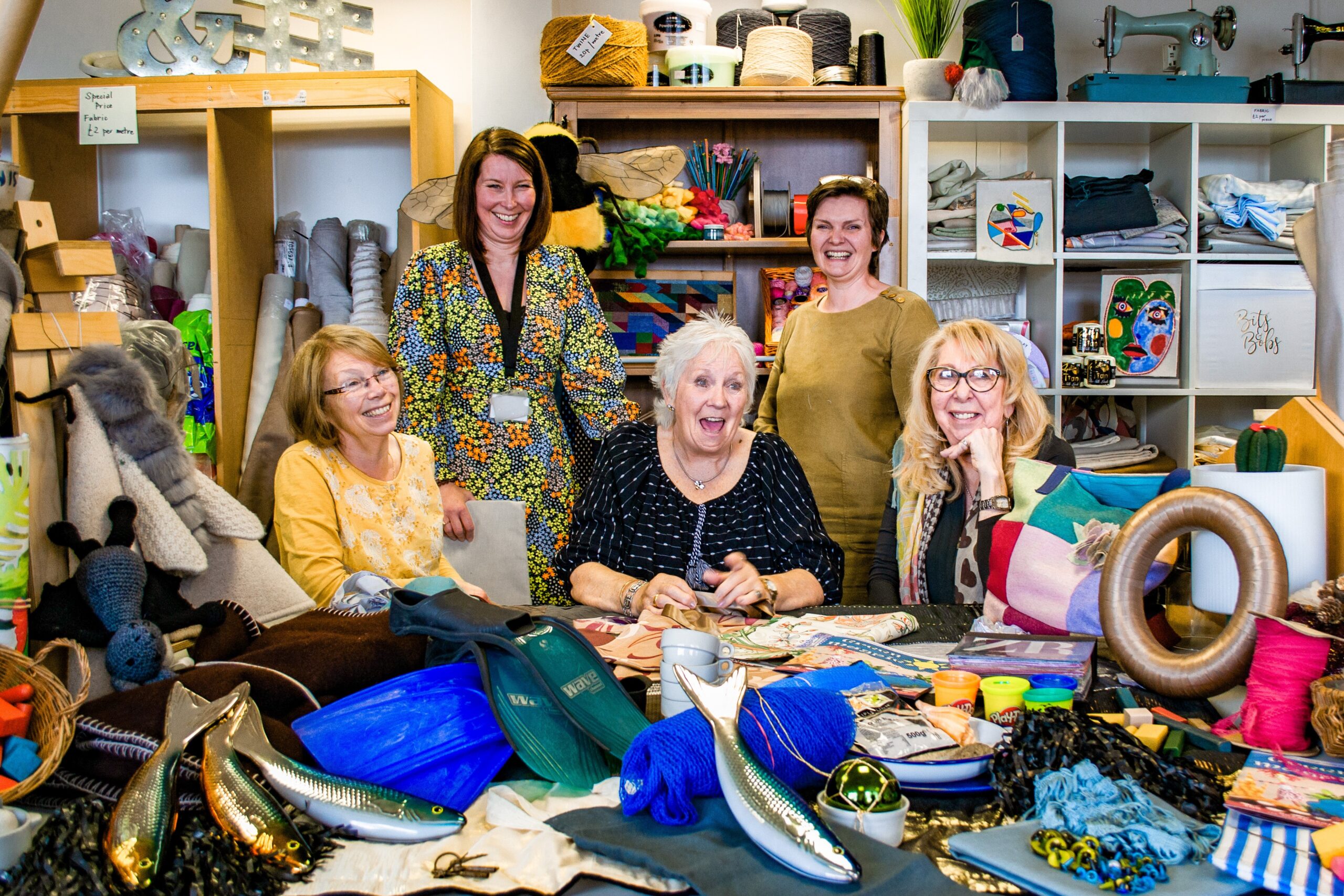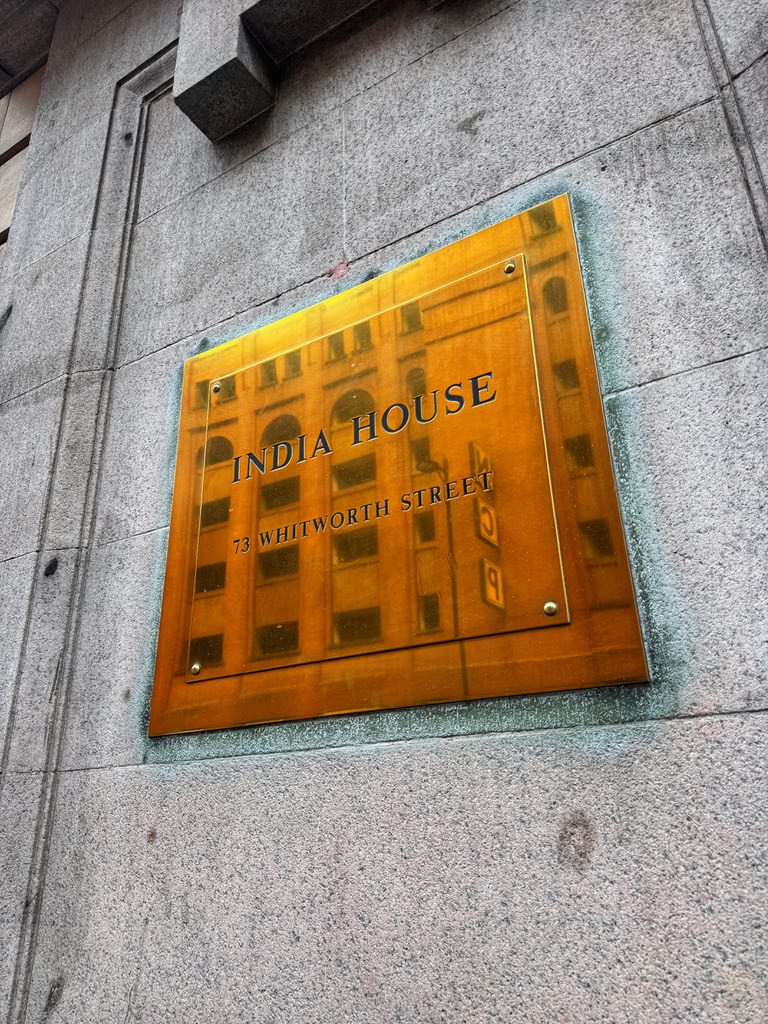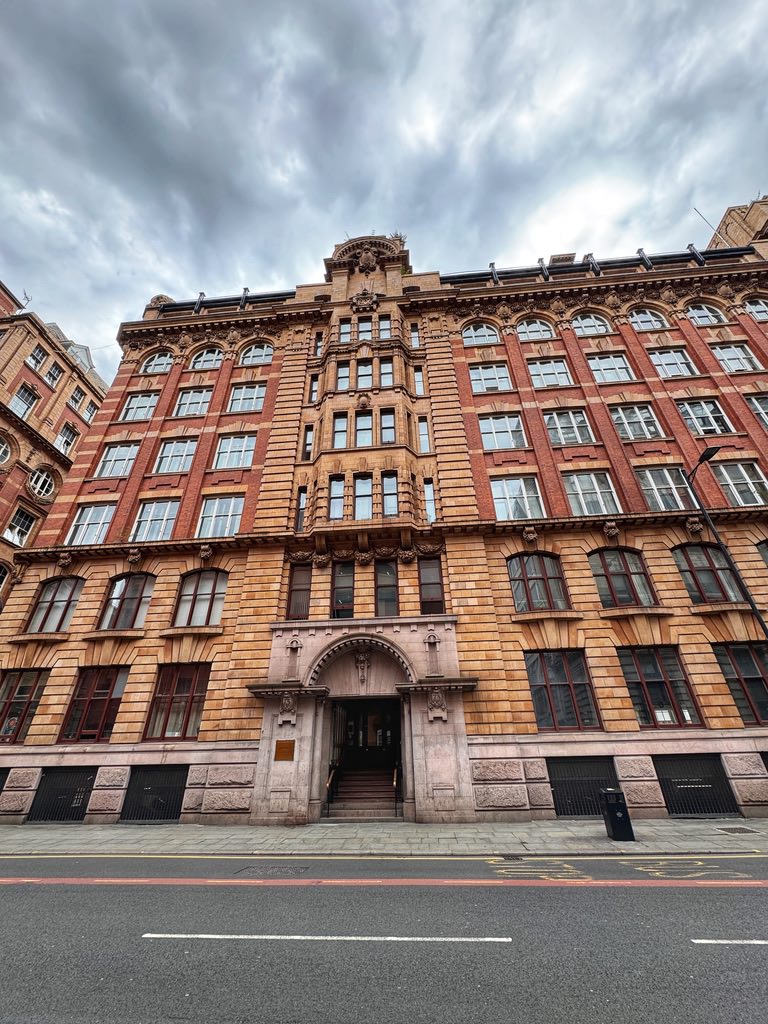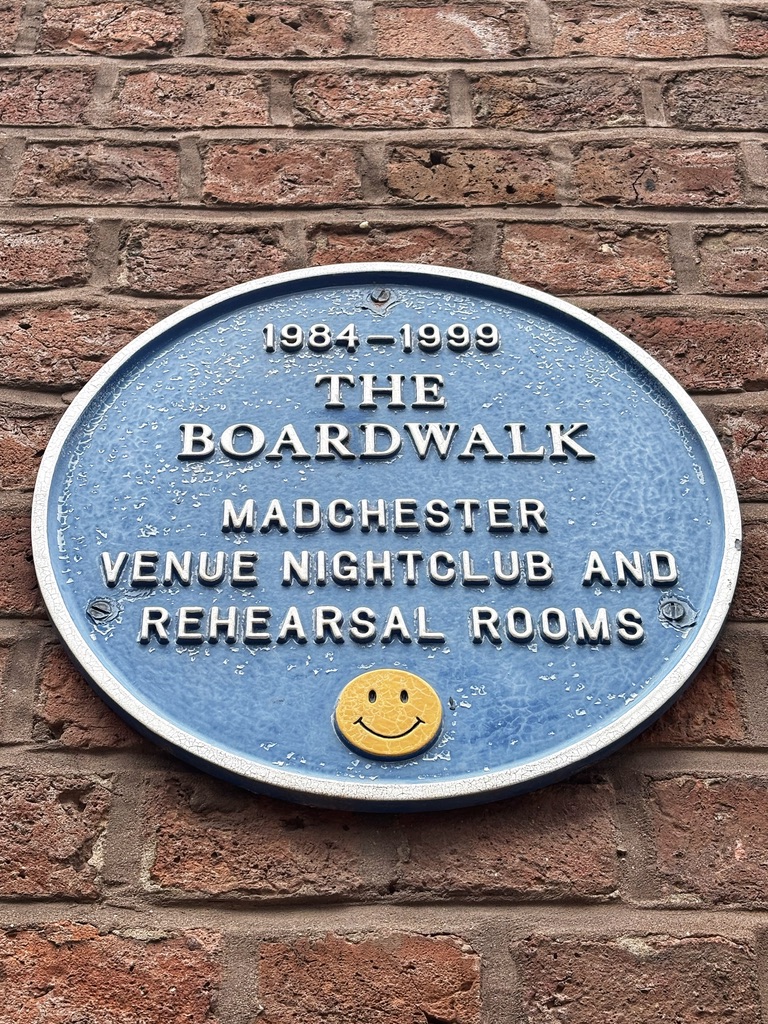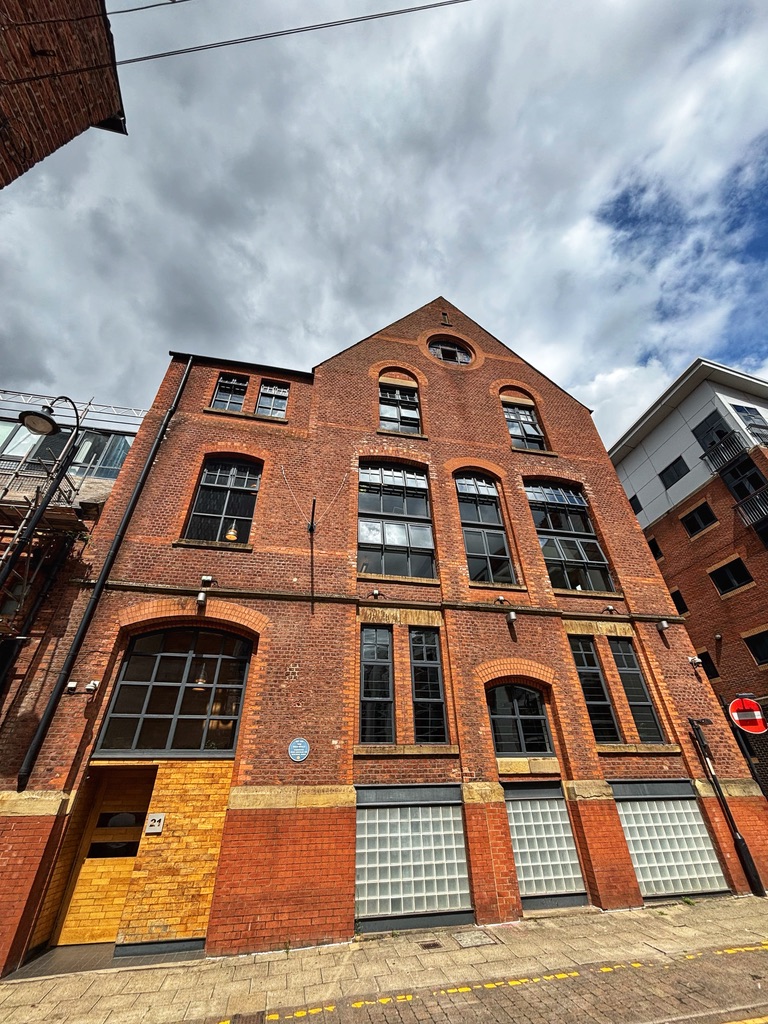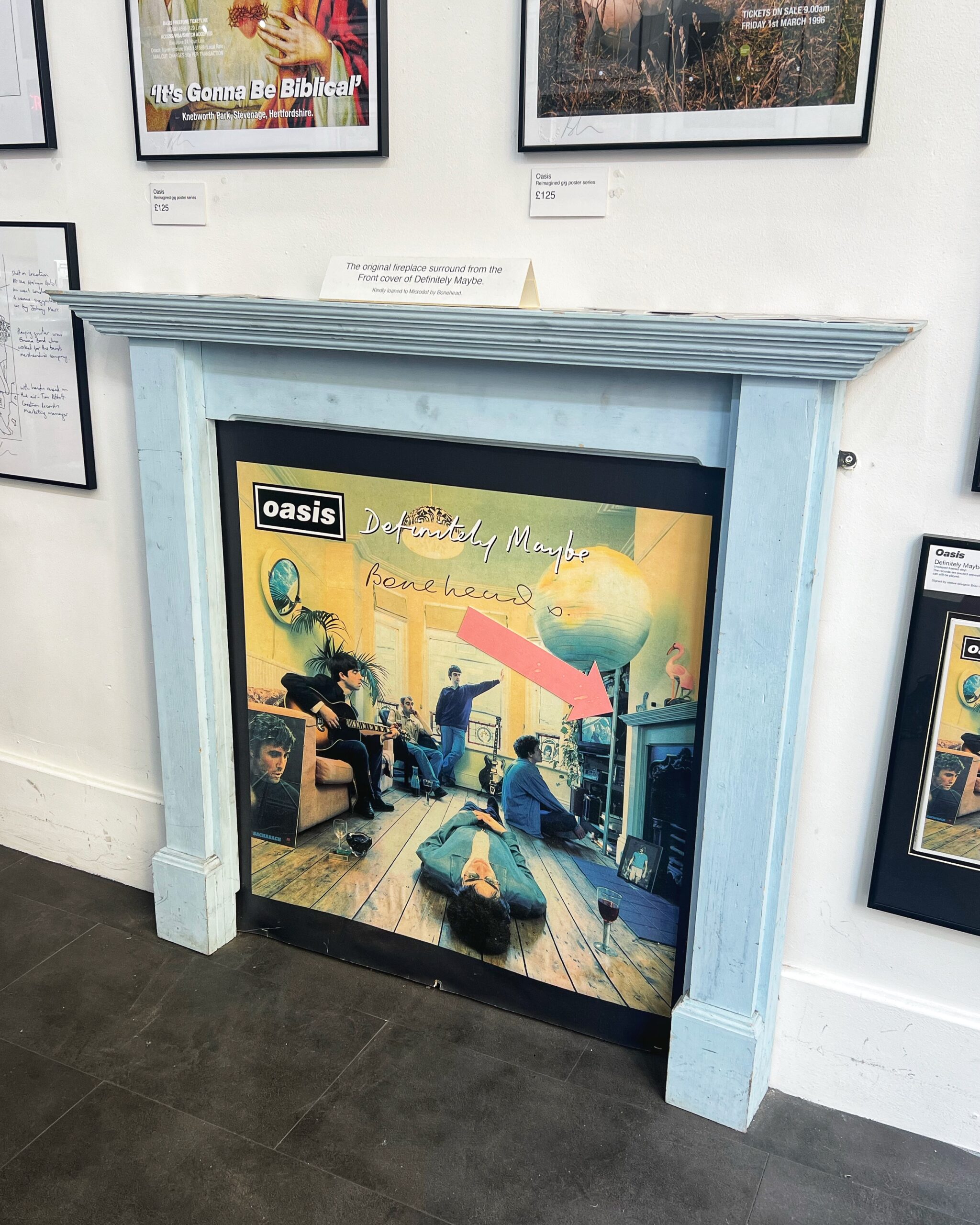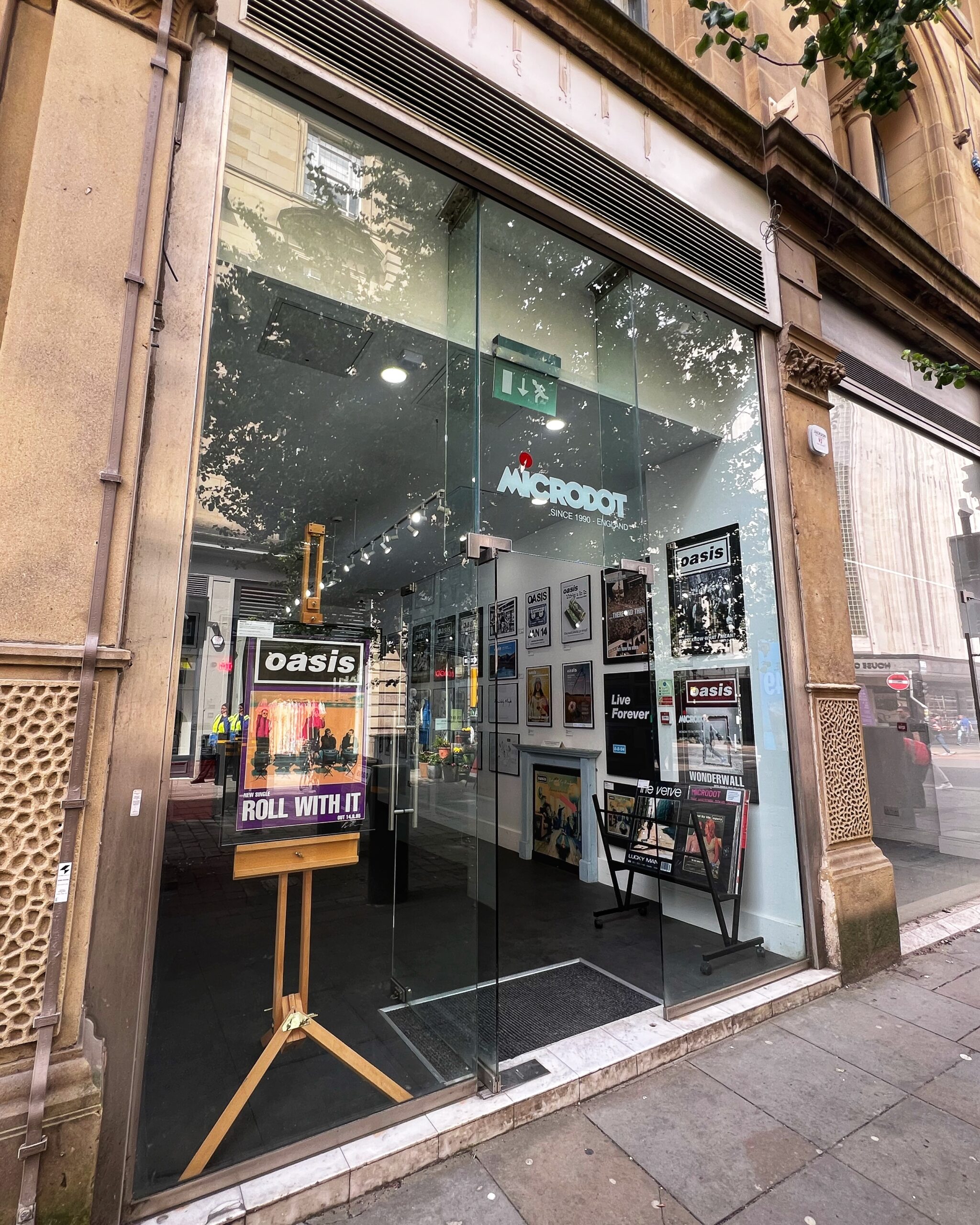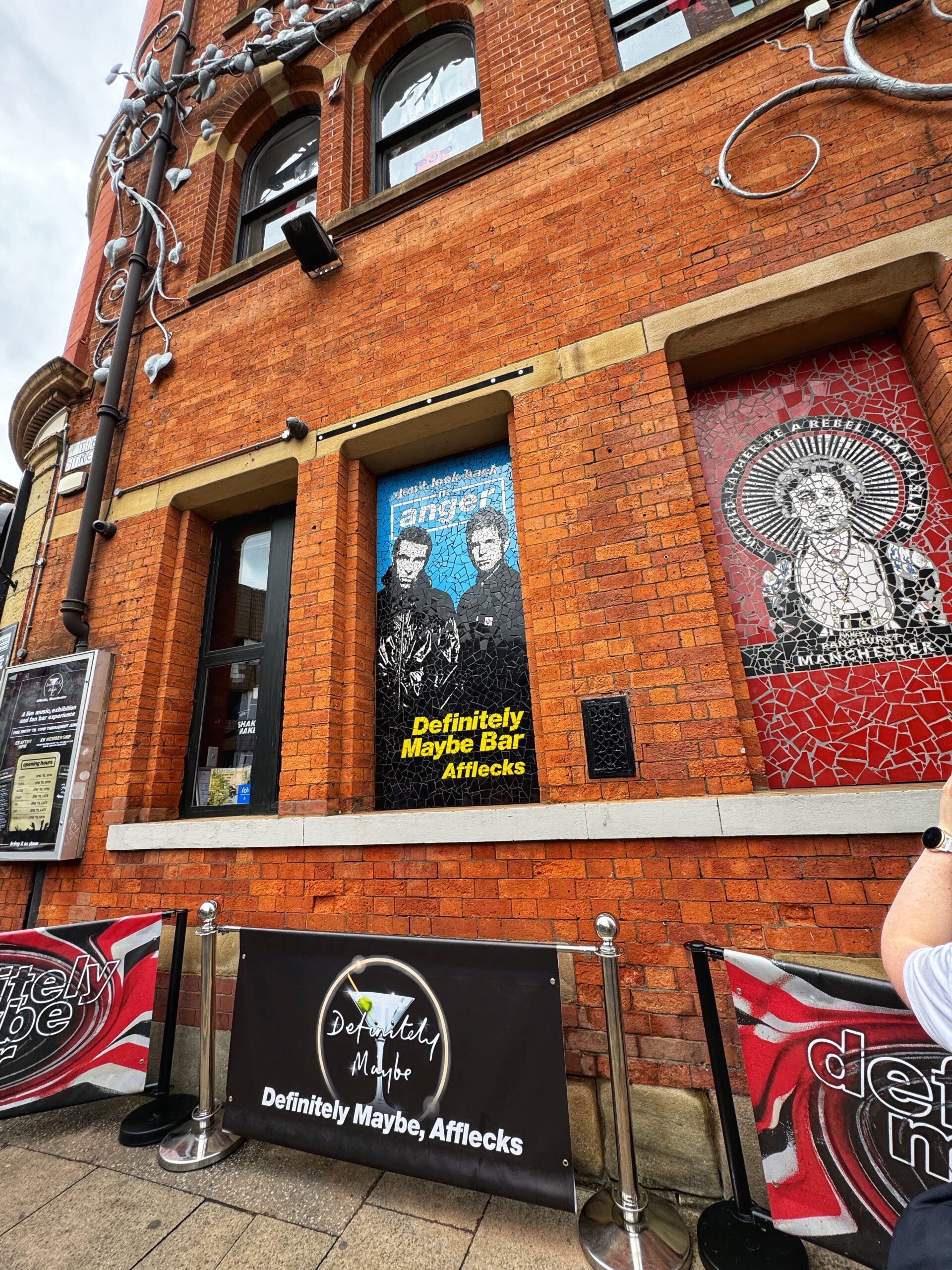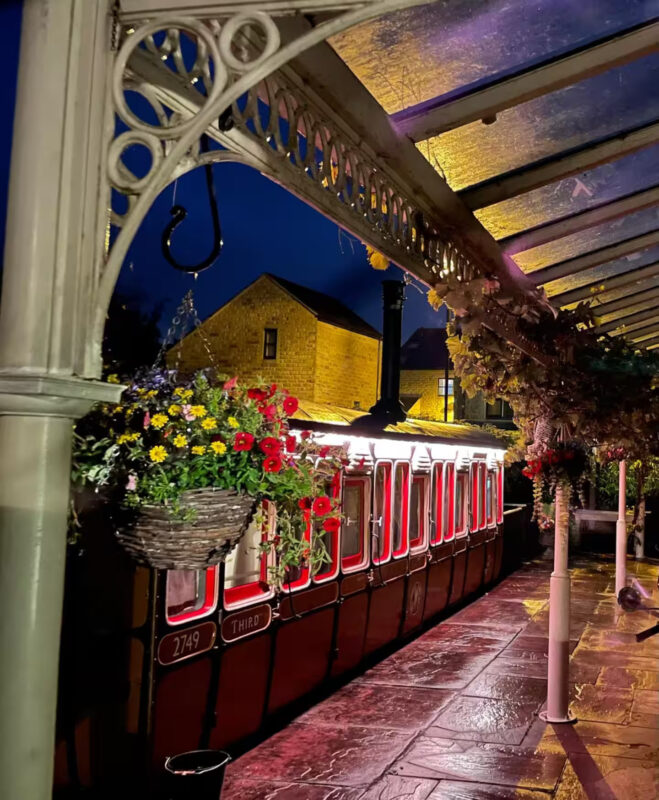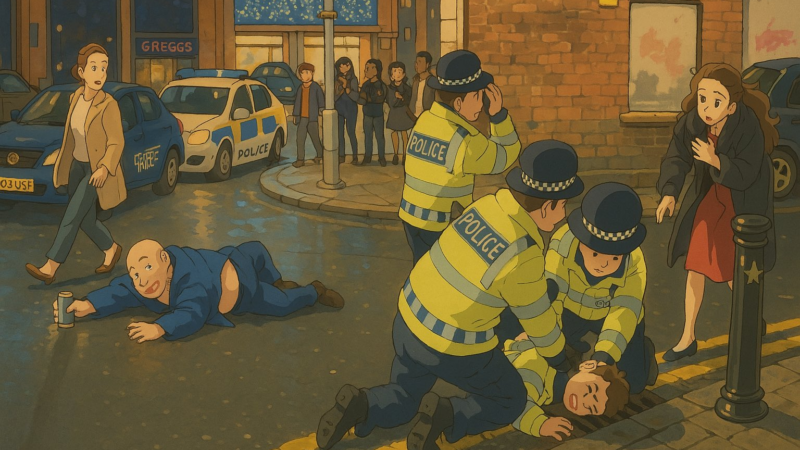Feature
‘This is our heritage’: How a neighbourhood saved Ancoats Dispensary from demolition
The story of the ten year fight to protect a historic building and Mancunian legacy from destruction.

Linda Carver sits opposite me in a small café on Oldham Road. She speaks softly, sometimes pausing, and I can’t help leaning in as she tells me her story. It’s the tale of Ancoats Dispensary, the Grade II listed former hospital on Old Mill Street, and how it’s still standing, despite all the odds.
Linda grew up in Ancoats but moved away as an adult. Work drew her back to Manchester so she applied to the council and was rehoused in Victoria Square, mere streets away from where her father had worked as an apprentice plumber. Linda had always been heavily involved in the community, so joined the Ancoats Residents’ Forum as a way to reconnect with the local area.
One night, in June 2011, there was a meeting hosted by the developer Urban Splash. They presented the Forum with their plans to develop Ancoats.
At the time, Ancoats was certainly not the gentrified, colourful, small-dog owning place that it is today; it was a highly residential area, with lots of red brick and little else. The mock-ups were a predictor of how the area could change: Colourful barges, bistros and bakeries along the canal, and people sitting outside in the sun.
Linda found herself looking for Ancoats Dispensary within the mock-ups but couldn’t see it anywhere. She had seen the building, surrounded by scaffolding, but thought that the developers must have had a plan for it.
Linda asked the question out loud: Where was the Dispensary in the developer’s plans?
“There was a hush in the room,” Linda told me in a soft voice. “Silence. And then somebody muttered under their breath: ‘I think it’s being demolished’.
“And at that moment, you could say, it changed the direction of my life. Because in my heart, I thought, ‘I don’t bloody think so!’”
Linda’s voice becomes so quiet I struggled to hear her, but an underlying note of anger, ten years on, carried the words across the table to me, and I felt her shock as if it were my own.

The Ancoats Dispensary on Old Mill Road was opened in 1874, the third iteration of the building first established in 1828. It was the only voluntary hospital in Manchester, providing lifesaving care to anyone who needed it.
Over the following century and a half, thousands of Manchester’s residents used the hospital, treated for everything from accidents in the cotton mills to broken bones and cancer. In 1974, the building was designated a Grade II listed building, due to its architectural and historical importance. The Dispensary was closed in 1987, when all services were transferred to North Manchester General Hospital.
When Linda heard that Ancoats Dispensary was going to be demolished, she was furious. There had been no public consultation, and very few residents seemed to know about the decision. She called her local councillor, who invited her to a planning meeting the following week.
“I spoke about this Grade II Listed building, the level of medical advancements that had happened there,” Linda said.
“That there’s a great, almost national importance this building created. We should be lording it as a centrepiece for Manchester, for visitors to come and see!”
The building certainly carries a lot of history within its crumbling walls. It was the home to the country’s first fracture clinic, set up by Harry Platt (later knighted for his services to medicine), and Manchester’s first radiology department. Peter McEvedy, one of the most talented surgeons of his day, worked at the Dispensary for almost thirty years. After his death, the hospital decided to commemorate him by commissioning a painting by a then-unknown LS Lowry; ‘Ancoats Hospital Outpatients’ Hall’ is now one of his most famous works of art.
It was this history and more that Linda saw was being threatened by demolishment.
“It would have meant that history had been obliterated,” she said soberly.
“And the council would have done it, because they’ve no imagination, they have no sense of history.”
When a building gets put forward for demolition, there is a multi-stage process to go through before the actual decision to demolish happens. So, Linda kept going to the planning meetings to talk about the history of the building and how important it was to her.
The decision to demolish kept getting deferred, again and again. But by this point, Linda realised that she needed to get other people involved. She roped in her sister, who had been a staff nurse at Ancoats Dispensary, and they decided to hold a public meeting. A notice was placed in the local paper, and the MP at the time, Tony Lloyd, was invited.
Miraculously, 43 people turned up, including the MP.
“Now that might not sound like much, but it’s enormous for Ancoats,” Linda said. “And they all had their own experiences of Ancoats Hospital and were concerned about the decision to demolish it.”

Many Mancunians have had interactions with the Dispensary over the years; themselves, family, friends have been treated there, or worked in the building. The Facebook group ‘We Grew Up in Manchester’ spills over with memories. There’s someone who did nurse training in the 80s (“everyone knew one another – such a friendly place to work”) and another who remembers that “the staff used to go round the wards at Christmas carols to the patients.” It was a busy working hospital, and one that many people depended on.
The public meeting revealed such a strength of feeling that Linda went back to the planning committee to tell them that they were going to start a group. They were going to fight to save the Dispensary.
But only days after the public meeting, Tony Lloyd rang Linda to say that time had run out. The Dispensary was due to be demolished in just a few weeks.
Linda was practically speechless.
Nevertheless, she jumped straight into action and called an emergency meeting for everyone who had shown up at the public meeting days before.
“All we were concerned about was that it wasn’t going to be demolished,” Linda said. “A piece of working history just wiped out: we weren’t having it.”
The emergency meeting was very stirring, Linda remembered. They named themselves ‘Save Ancoats Dispensary’; someone stood up and gave a Shakespearean speech from Henry II. Most importantly, the group decided to mount a vigil outside the building. The vigil would become a cornerstone of the fight to save the Dispensary: every day, for six years, there were two or three people outside the building, in whatever weather Manchester threw at them.
In the beginning, it was all very primitive, Linda said. But the group were determined.
“We had someone looking through the Manchester Evening News, scouring it for any kind of road closure, to make sure we knew when the bulldozers were coming. We had a telephone tree established, neighbours phoning neighbours so we would all find out if something was happening.”
The vigil itself began soon after the emergency meeting. Jackie Marston, who was at the emergency meeting, became the vigil’s organiser, doing the rotas, providing tea and biscuits for whoever was on a shift outside the building.
They started off by meeting in the middle of the road, between the two lanes on Old Mill Street. Cars driving past would stop and people would ask what was going on; the group had petitions for people to sign and would just chat to passers-by about the Dispensary.

Jackie was heavily involved with the Save Ancoats Dispensary group, “but the best part was actually on the vigil,” she told me. “The camaraderie there was unbelievable. There were people that I would never have met other than through the vigil, and they’re still friends now.”
The set up was very basic: just some chairs, a little stove, a tent for when it rained. As the vigil progressed, the group built what Jackie called ‘our structure’: made out of old boards nailed together, which was mostly waterproof, and that they could open and lock up at the end of each day.
I asked Linda what the vigil came to represent. “It became a symbol of resistance,” she said. “On that contested piece of land. Nobody moved us: the police didn’t move us, the council never moved us, we became known, everybody knew about it. And that’s what we wanted.”

The Dispensary has been a symbol of resistance for years. In 1979, the first threats to close the Dispensary were raised, as the health authorities looked to centralise services into the North Manchester General Hospital three-and-a-half miles away. A local protest was organised by a porter at the Dispensary, and the hospital remained open. But almost ten years later, the decision to close the Dispensary was taken. Furious, a group of Ancoats residents managed to get inside the building on the day it closed, and occupied it. The health authorities eventually opened the Ancoats Community Clinic as a direct response to the protest.
Whilst the vigil continued, Save Ancoats Dispensary were also applying to Manchester City Council, under the Freedom of Information Act, for documents about the Dispensary and records about its condition. They discovered that reports had been made about different parts of the building becoming dangerous.
“We thought, this is what they want now,” Linda said. “They want to demolish it, bit by bit.” It hit home to Linda one afternoon as she arrived at the Dispensary and found that the building’s central tower had been imploded half an hour earlier.
The group were beginning to realise that simply calling for the building not to be demolished wasn’t going to be enough. They had to come up with an alternative proposal in order for the council to really listen to them.
The group went door to door through Ancoats to find the level of support they had in trying to save the building, and what the local community might want it to be if restored.
Save Ancoats Dispensary started to imagine the building repurposed into a community space, something sorely lacking in Ancoats. “Our vision was for it to be for the community itself,” Linda said. “And for the new residents in Ancoats. It would have been for them.”
The group envisaged a multi-purpose space, perhaps a sustainably run café, offices, a place for artists to showcase their work. “We wanted to live the dream,” Linda said, somewhat ruefully.
Around the same time, by the end of 2012, the group realised that a proper survey of the building needed to be done. The Dispensary was in a very bad state. Tom Bloxham, chairman of Urban Splash, had bought the building in 2001 with plans to restore and regenerate the Dispensary. He had received a significant amount of money from the Northwest Development Agency to conserve it.
However, no safeguarding happened. The roof was taken off, and from then on, the deterioration of the building was rapid. Over the next ten years, the Dispensary became increasingly dangerous, but little was done to protect the Grade II listed building.
So, Save Ancoats Dispensary, at the end of 2012, commissioned a surveyor to give them a full picture of the state of the Dispensary, but in order to do so, they had to raise several hundred pounds.
“We had a collection box at the vigil, and we pleaded with the community to give us the funds to find out if the building really was worth saving,” Linda told me. “And we raised the £600 we needed to pay him, believe it or not, just from donations from local people.”
The surveyor came down from Edinburgh, and when he’d finished, met Linda for a coffee. “He said: I can tell you now that this building hasn’t been dismantled as it should have been, as you do with listed buildings. It’s being demolished.”
***
As the survey of the Dispensary was being carried out, an architect got in touch with Linda offering his services as conservation architect for free. The group were delighted and welcomed him on board.
In May 2013, the architect brokered a meeting between the stakeholders in the Dispensary: the Save Ancoats Dispensary group, the city council, English Heritage, and Tom Bloxham of Urban Splash.
Urban Splash still owned the building: after several attempts to try and sell it on, Bloxham had said that his only alternative was to move towards demolishing it. But at this meeting, he said he had heard of the new Heritage Lottery Fund Heritage and Enterprise Scheme, which would enable the building to be restored whilst also becoming sustainable for the future. And through this scheme, if the group could come up with the money that would be needed, Bloxham would waive the move towards demolition.
In July 2014, the group’s application to the Heritage Lottery Foundation was provisionally accepted, and Ancoats Dispensary Ltd, the group’s financial vehicle, received £770,000 from the Heritage Lottery Fund to help stabilise the building. In order to proceed however, the group had to match-fund the amount awarded for Stage One, which was £55,000.
The amount of money that the group needed to raise was seemingly impossible for a small, grassroots organisation. Through an intensive fundraising campaign, and large donations from residents and organisations alike, the group managed to raise almost half the funds required.
But as the deadline crept forward into May 2015, the group were still £28,000 short of the target.
One day, an anonymous donor came up with the exact amount they needed. Ancoats Dispensary Trust took over the lease of Ancoats Dispensary from Urban Splash, and the building became safeguarded against further deterioration.
“These were ordinary people who had a dream, a vision,” Linda said. “All we could think about is that this is our heritage, and it’s going to be obliterated if we don’t do something. And we can do something.”

This was an ecstatic moment for the group, who had repurposed themselves into a development collective: Ancoats Dispensary Trust. But the pressure was on immediately to match the funding required for Stage Two: the Trust had eighteen months to come up with £800,000.
“We just couldn’t do it,” Linda said. “We did appoint a couple of fundraisers, but they weren’t given enough time, it was hopeless.”
The Dispensary was handed back to the developer, who in turn moved it back to the city council. But Great Places Housing Association had become interested in the building. They’d donated generously to the crowdfunding for Stage One and were already involved in the development of Ancoats and New Islington, with a particular focus on providing affordable housing in the area.
Great Places took the Dispensary on as a full-blown project around three years ago, according to Great Places’ Director of Development Helen Spencer.
“That was when we really started to get to grips with what it was. Because it’s in such disrepair, it’s been quite hard to really understand the condition of the building, and to understand exactly what’s required.”

Great Places plan to turn the Dispensary into 39 affordable homes, whilst restoring and regenerating as much of the building as they can. The front of the building and the wall on Lampwick Lane will be restored, and the central tower will be rebuilt.
“It’s been a really interesting journey,” Helen told me.
“We’ve had technical and design challenges, the heritage challenges and the stakeholder challenges. It’s been a test of steel at times to really pull everything together, but everyone was just so focused on how we can do the best by this building and save what we can.”
Ancoats Dispensary Trust have remained involved and kept updated on the plans put forward by Great Places. As the Trust’s vision for the Dispensary was much more communitarian, the group were wary at first of Great Places’ plans. Ultimately though, the two organisations are working towards the same fundamental goal: to save and preserve the building.
“I think we’re going to see the benefit of that building full of life again,” said Helen.
Ancoats Dispensary has so much history, at personal and community levels.
“It was the beating heart of Ancoats,” Jackie told me. It became the group’s core message, reflecting the importance it has to so many people.
That the Dispensary is still standing is a testament to years’ worth of fighting by Ancoats residents.
“I feel the campaign has been a monument to community action, of what community actually can do,” Linda said.
“Truth speaking to power. And not giving up.”
Photos: Anna Willis, Brian Stark, Pete Birkinshaw

